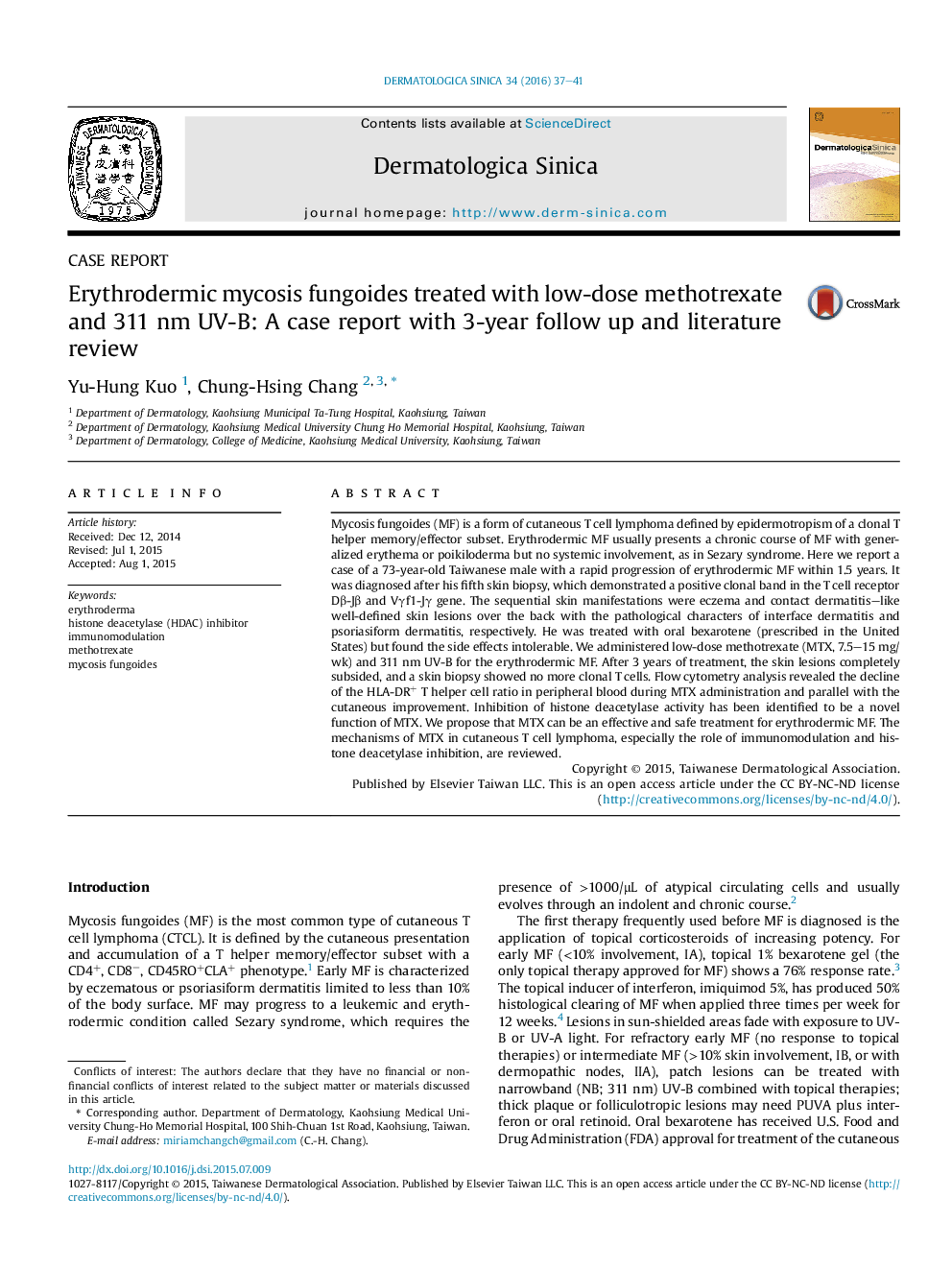| Article ID | Journal | Published Year | Pages | File Type |
|---|---|---|---|---|
| 3196313 | Dermatologica Sinica | 2016 | 5 Pages |
Mycosis fungoides (MF) is a form of cutaneous T cell lymphoma defined by epidermotropism of a clonal T helper memory/effector subset. Erythrodermic MF usually presents a chronic course of MF with generalized erythema or poikiloderma but no systemic involvement, as in Sezary syndrome. Here we report a case of a 73-year-old Taiwanese male with a rapid progression of erythrodermic MF within 1.5 years. It was diagnosed after his fifth skin biopsy, which demonstrated a positive clonal band in the T cell receptor Dβ-Jβ and Vγf1-Jγ gene. The sequential skin manifestations were eczema and contact dermatitis–like well-defined skin lesions over the back with the pathological characters of interface dermatitis and psoriasiform dermatitis, respectively. He was treated with oral bexarotene (prescribed in the United States) but found the side effects intolerable. We administered low-dose methotrexate (MTX, 7.5–15 mg/wk) and 311 nm UV-B for the erythrodermic MF. After 3 years of treatment, the skin lesions completely subsided, and a skin biopsy showed no more clonal T cells. Flow cytometry analysis revealed the decline of the HLA-DR+ T helper cell ratio in peripheral blood during MTX administration and parallel with the cutaneous improvement. Inhibition of histone deacetylase activity has been identified to be a novel function of MTX. We propose that MTX can be an effective and safe treatment for erythrodermic MF. The mechanisms of MTX in cutaneous T cell lymphoma, especially the role of immunomodulation and histone deacetylase inhibition, are reviewed.
